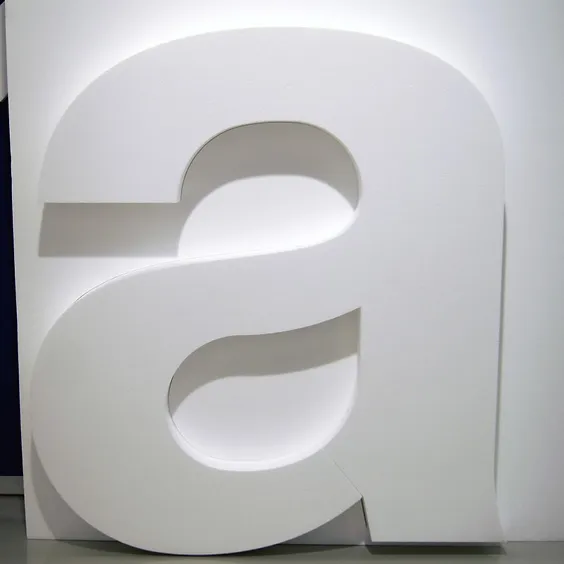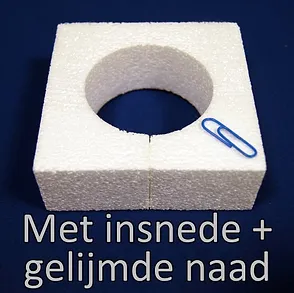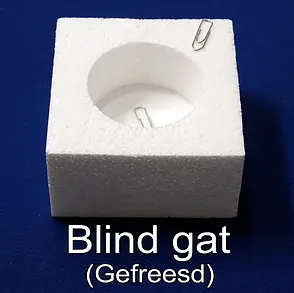With or without cut-out
Openings in sheets and letters (such as in the ‘O’ or ‘B’) can be produced with or without a cut-out.
With a cut-out: The figure is cut into or sawn to cut or saw the internal contour. The seam, which measures approximately 2 mm, will remain visible.
With cut-out + glued seam Next, the cut-out is again sprayed close using adhesive. The seam is now closed, but you can still see a slight distortion where the seam is from close-up.
Without cut-out: When a seam may not be visible, the opening or internal figure must be routed. This solution is more expensive than working with a cut-out. The tool length also determines the maximum depth of the routing.
The cut-out can nearly not be seen in relation to large letters. This ‘a’ that has a height of 950 mm has a cut-out at the bottom.

Holes: continuous or blind
Opening in sheets can be continuous or non-continuous (‘blind’).
Continuous holes with a cut-out: The figure is cut into or sawn to cut or saw the internal contour. The seam of approximately 2 mm will remain visible or can be glued shut.
Continuous holes without a cut-out: When a seam may not be visible, the opening or internal figure must be routed. This solution is more expensive than working with a cut-out. The tool length also determines the maximum depth of the routing.
Blind holes: The opening is deepened for a specific depth in the sheet. The hole is blind because you cannot look through it.



